Michigan health centers need medical staff. How one program is helping
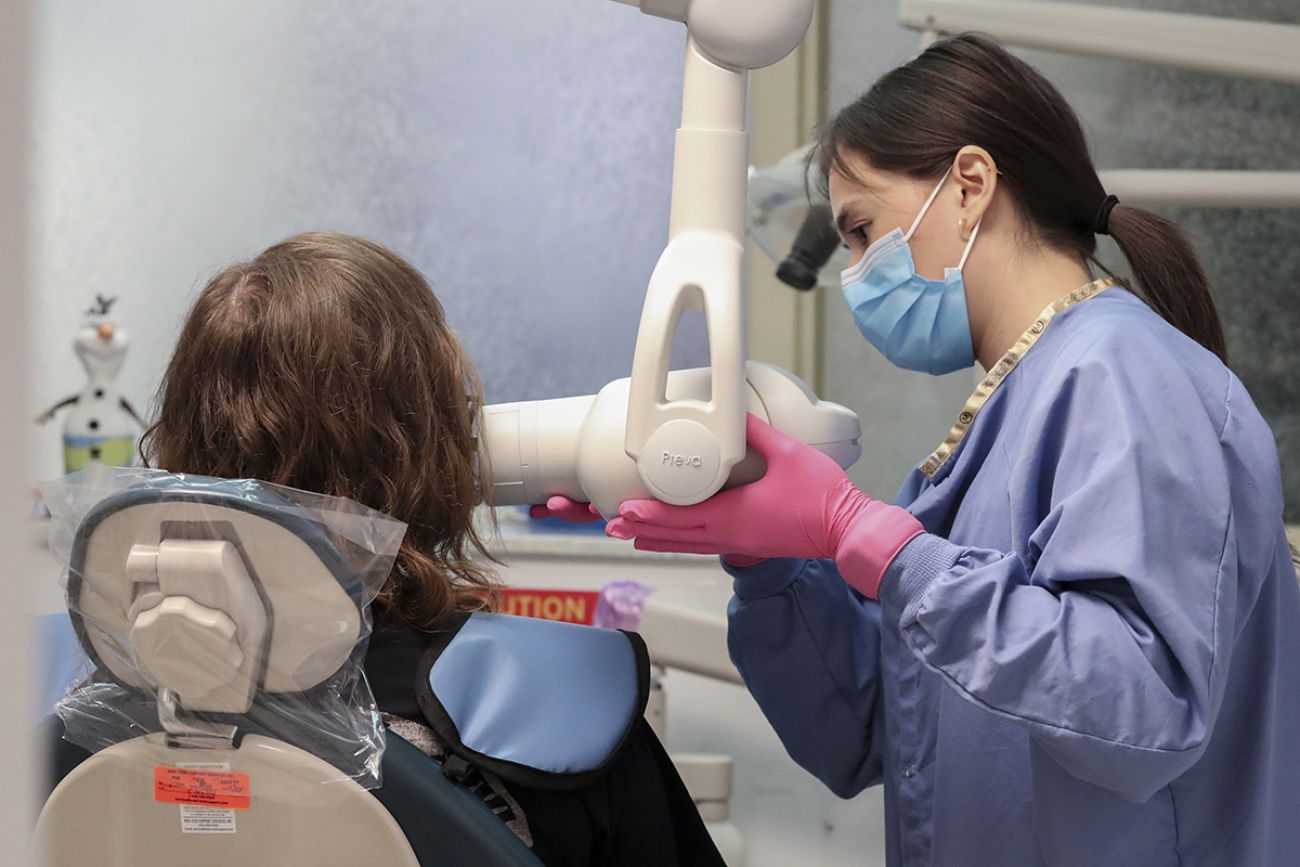
- Health care jobs — with training — are immediately available at dozens of health care centers throughout the state.
- The program focuses on the acutely-short staffed medical positions: medical, dental and nursing assistants
- The program also creates pathways for a more diverse workforce, pulling trainees from communities they serve
She never considered patient care as a career.
Blood? Needles?
Just the thought made Shanice Wyatt shutter.
“To be honest, I was terrified,” the newly-minted medical assistant said, chuckling at her former fears.
Wyatt is among the first batch of graduates from a new Health Centers Careers Training Program. On-the-job training offered Wyatt a clear career track to becoming a medical assistant at Western Wayne Family Health Centers near Detroit, a role she’d never considered until the program. And because the program paid for her training, she didn’t incur debt to qualify for the position.
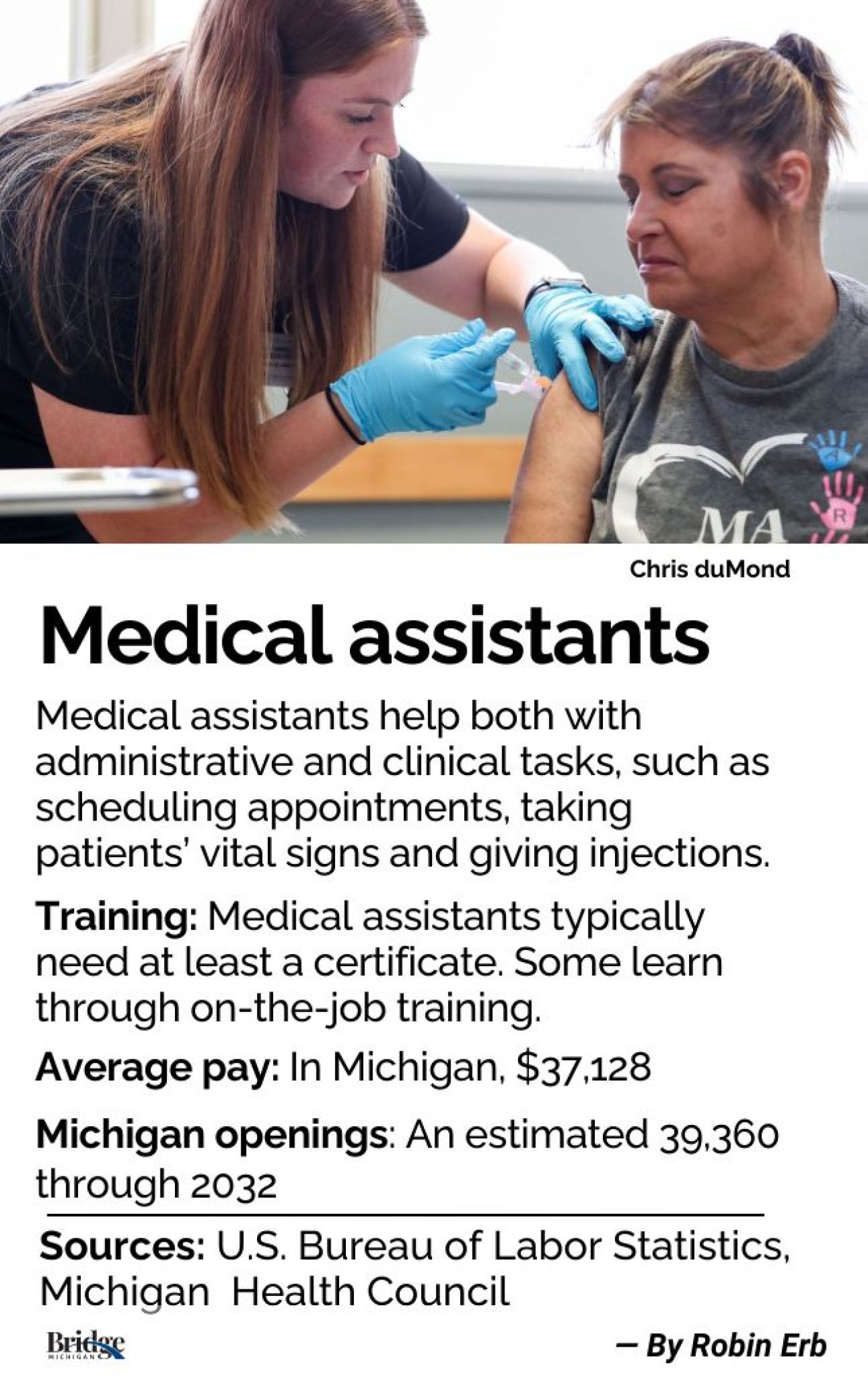
Wyatt and others in the Health Centers Careers Training Program are helping fill gaping holes throughout the state’s federally funded community health clinics.
Related:
- Two in five Michigan nurses plan to leave their jobs, survey finds.
- Michigan hospitals lost 1,700 beds from staff shortages, seek more money
- Staffing woes foil Michigan efforts to keep residents out of nursing homes
In a state wracked by health care workers shortages in recent years, medical assistants and dental assistants are among the most in demand, according to MHC Insight, a research and data center at the health care research nonprofit, Michigan Health Council.
Over the next decade, Michigan will need nearly 19,000 dental assistants, who in Michigan made about $18 an hour in 2021, and 39,000 medical assistants, (about $18/hour), the council’s analysis found.
In the past year, Michigan employers posted more than 15,000 openings for medical assistants and dental assistants, according to the council’s research. That’s in part due to significant churn in these jobs. The council reports that two-in-three workers in these positions leave in a given year.
Michigan’s shortage is mirrored elsewhere. Nationally, the need for both positions is projected to grow faster than the average of all other occupations through 2031 — 8 percent for dental assistants and 16 percent for medical assistants, according to the U.S Bureau of Labor Statistics.
Fewer workers can strangle access to care.
Medical assistants are the “quarterback of the health team,” said Rachel Ruddock, director of workforce and health professions training at the Michigan Primary Care Association, which launched the on-the-job training program. The association represents community health centers, or federally qualified health centers, throughout the state. The centers largely serve under- and uninsured patients with primary and dental care and specialty services.
Medical assistants escort patients to exam rooms, check vitals, review medications and medical histories, ask about allergies, and communicate that medical intelligence to the doctor.
“They are in many ways the eyes and ears of a provider. They drive efficiency on the teams. Without them, the team comes to a grinding halt,” Ruddock said.
At Western Wayne’s Taylor and Inskter clinics, where Wyatt works, an even larger career goal has crowded out any lingering uneasiness she had about drawing blood, giving shots, or being within a breath’s distance of patients.
“I never was the kind of person who thought I’d want to be hands-on. But once you get into the practice of doing it, of being there for your patients, you realize it’s a skill, and it’s a skill I’m good at — talking with patients.”
“It’s making my dream expand. It has me thinking about being a nurse,” 34-year-old Wyatt said.
It’s difficult to overstate the need for more people like Wyatt.
“We had centers that wanted to hire physicians, and there were physicians available, but we couldn’t hire them because we didn’t have the support team,” said Ruddock of the primary care association.
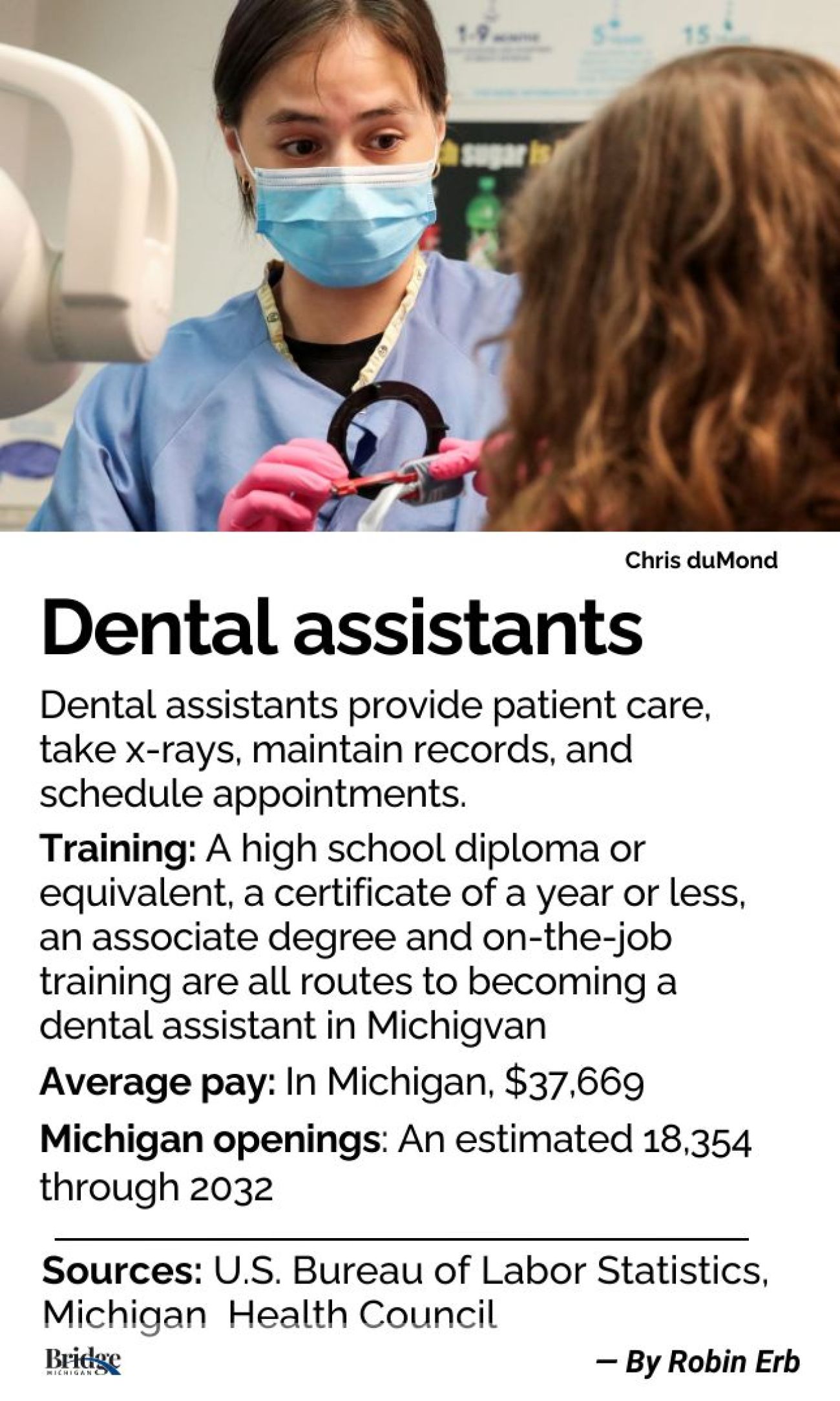
The shortage isn’t limited to the network of community health clinics that serve more than 715,000 Michiganders each year.
The Kalamazoo Family Medicine Residency Clinic, which trains doctors from Western Michigan University, has just two medical assistants to support nine resident physicians, rather than the previous four medical assistants, said Dr. Lauren Piper, the clinic’s medical director.
That forces the medical residents to “room patients,” execute finger-prick tests and other tasks usually executed by medical assistants,
Other WMU clinics facing similar shortages are booking more time for appointments or blocking out appointment times so the residents, now doing medical assistant tasks as well, can catch up.
“At any rate, it’s the same net result: decreased access, decreased availability for patients,” Piper said.
Pay, not debt
The MPCA training program launched a year ago with a $7.6 million grant from federal American Rescue Plan funds that streamed through the state as part of a $300 million line item to help build out Michigan’s health care workforce.
The program covers online coursework and in-clinic, hands-on training costs for medical and dental assistants. Training usually takes five to eight months, Ruddock said. The program also trains pharmacy technicians, medical billers and coders, medical administrative assistants, medical records specialists, community health workers and doulas at Michigan MPCA clinics, Ruddock said.
Hazel Vaca Rodriguez had been toying with career choices, including being a flight attendant.
But during a dental appointment last year at Hackley Community Care in Muskegon, someone mentioned the new program to the Muskegon Community College student.
“I was hesitant,” she recalled.
In her first week training as a dental assistant, she had to observe a tooth extraction. Vaca Rodriguez was unsettled again: Would she get sick at the sight of blood? Worse, would she pass out?
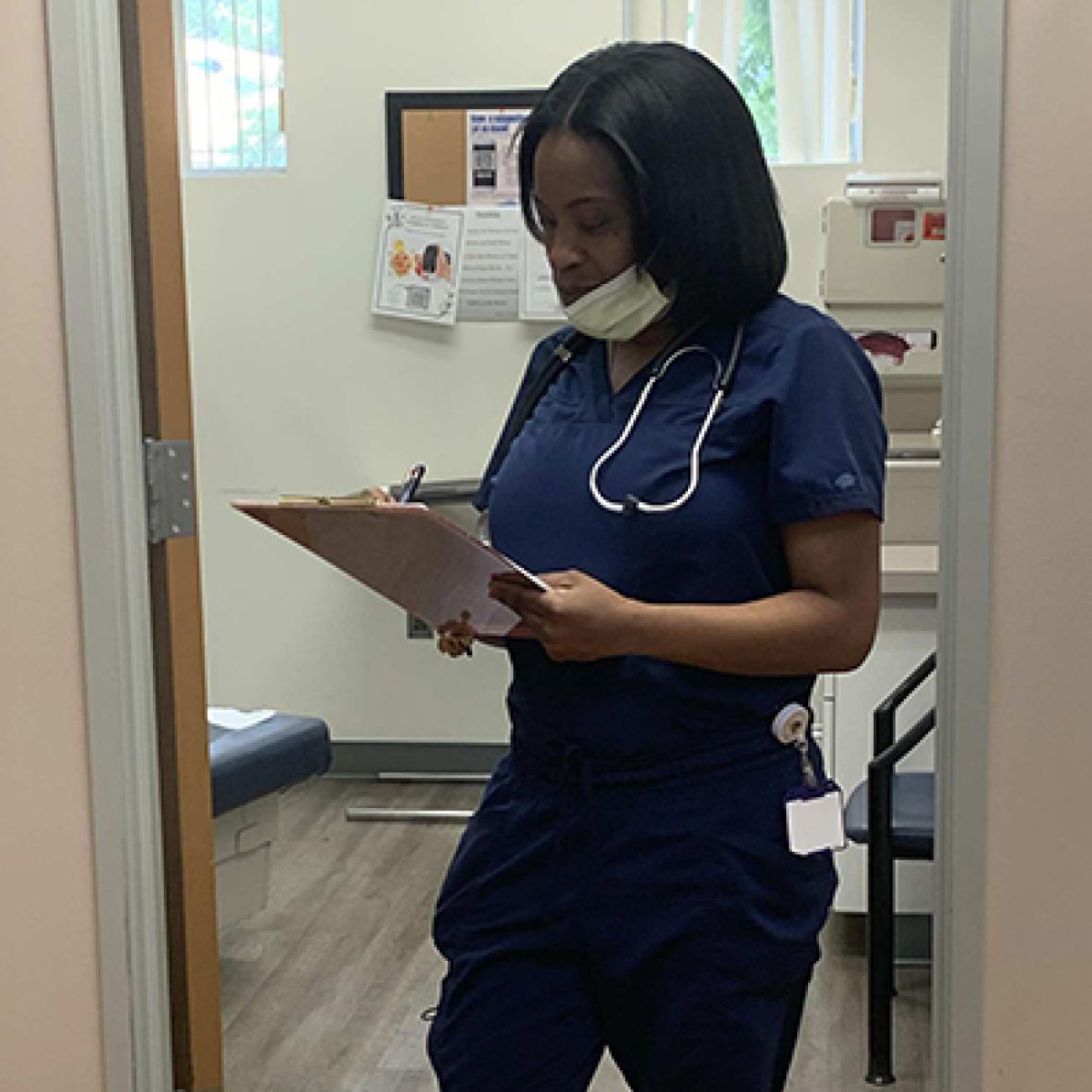
Instead, as she watched the smooth, intuitive motion of a well-practiced team exchanging instruments, assessing the patient for discomfort, and repositioning their bodies around trays and equipment, Vaca Rodriguez realized she had crowded closer, hovering, even as the dentist expertly withdrew a tooth.
With its gleaming root, it seemed shockingly oversized to the new recruit.
Vaca Rodriguez has thought of that day many times since.
“I was amazed… In a sense, it sped up my career choice,” she said.
Game changer
Each MPCA health center sets its wage scale, and pay varies among positions and depends on geography, too, with starting pay for medical and dental trainees ranging from $12.50 to $21 dollars an hour, Ruddock said.
The state funding helps clinics cover wages and costs of supplies, in addition to the tuition, she said: “The funding completely changed the game.”
For recruits, on-the-job training replaces the specter of thousands of dollars in student debt from classroom learning with an immediate paycheck and the promise of a full-time job.
Employees begin training from Day 1.
“I was able to come to work, do my hands-on training, do my online learning, and get my information that I’m supposed to have,” said India Johnson, who earned her medical assistant certificate at the Nottawaseppi Department at the Pine Creek Indian Reservation southwest of Battle Creek.
Johnson is a single mom, who had a baby and a 5-year-old when the pandemic first gripped Michigan. It forced her to abandon her training at Kellogg Community College to be a nurse.
Medical training at the Nottawaseppi clinic enabled Johnson to train in the clinic and get her online classwork done in a quiet room there That, in turn, allowed her to pay her bills and open more of her evenings to spend with her children.
And her dream of a nursing career? She said she plans to resume one day and maybe even continue her work at the center as a nurse: “I’m halfway to where I want to be.”
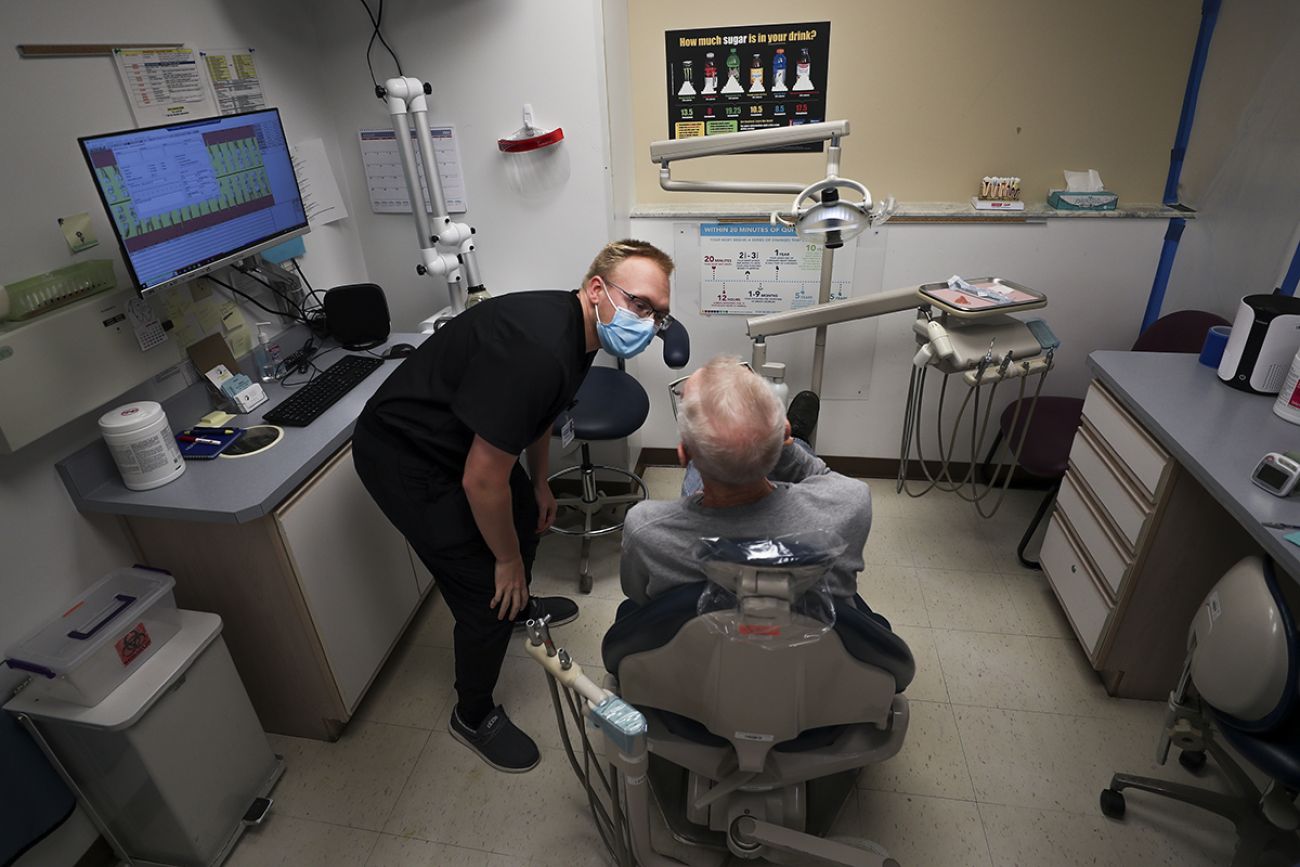
There’s this benefit, too: The training program enables health centers to diversify their workforce to better reflect the communities they serve by recruiting new staff from the immediate community — stay-at-home moms ready to reenter the workplace, for example.
“They’re not only growing their workforce, they’re growing a workforce that reflects their communities, matching the patient population that they serve,” Ruddock said.
Centers also might recruit current workers who otherwise hadn’t considered patient care as a career choice — turning a front office receptionist into a dental assistant, for example.
Over the past year, 92 people have been trained or are in training at 22 health centers across the state, Ruddock said.
In return, the centers may require a two-year work commitment at the facility. Those retention contracts can be important, given the high turnover rate among medical and dental assistants.
Trainees in the MPCA program who leave before the contract is up are required to repay the covered tuition.
The goal is to train 300 new workers for MPCA clinics by the end of 2024, Ruddock said.
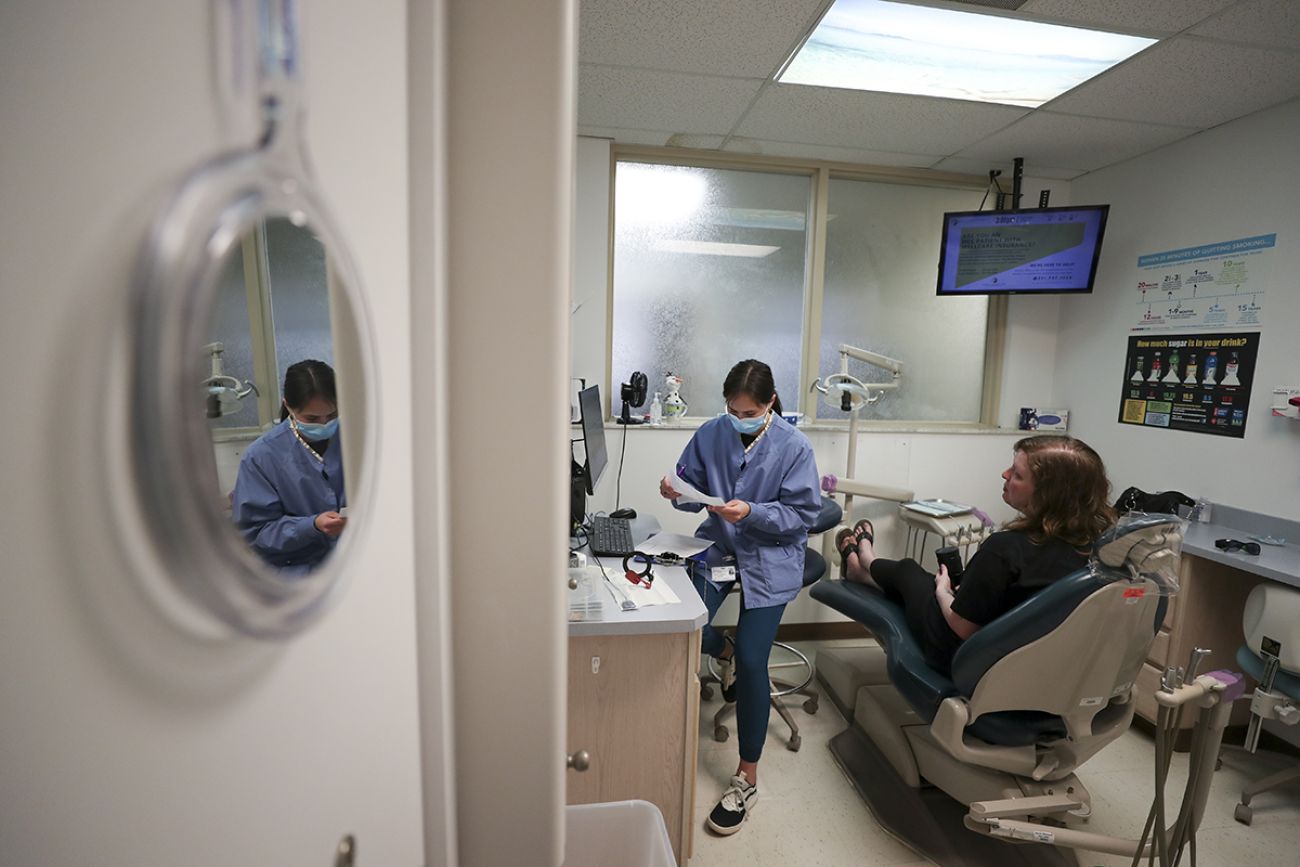
The program also offers experience in underserved areas. That, in turn, may woo young staff that otherwise might have been drawn only to the bright lights of urban centers.
A posting for the training program on the Indeed jobs website offered 22-year-old Brendan VanDeWeghe a paycheck and a brightly lit path to his career goal in dentistry.
The 22-year-old, who grew up near Grand Haven, is intrigued both by personal relationships between dentist and patient and cutting-edge technology such as 3D printing and dental milling machines.
He was applying to dental schools, he said, when he saw the job listing.
His training at the Hackley clinic allows him to build experience before dental school, which remains his primary goal. But VanDeWeghe said it has also deepened his interest in serving those who might otherwise go without dental care because of lack of insurance. And that, in turn, has him considering spending his time as a dentist in Michigan’s underserved communities.
“The small community atmosphere is amazing. It's like a small town — everyone knows each other and there’s this comradery,” he said.
Michigan workers vacancies
In this occasional series, we examine the scope of critical worker shortages in 2023, from doctors and police officers to math teachers and social workers. To view more stories in this series click here.
See what new members are saying about why they donated to Bridge Michigan:
- “In order for this information to be accurate and unbiased it must be underwritten by its readers, not by special interests.” - Larry S.
- “Not many other media sources report on the topics Bridge does.” - Susan B.
- “Your journalism is outstanding and rare these days.” - Mark S.
If you want to ensure the future of nonpartisan, nonprofit Michigan journalism, please become a member today. You, too, will be asked why you donated and maybe we'll feature your quote next time!





